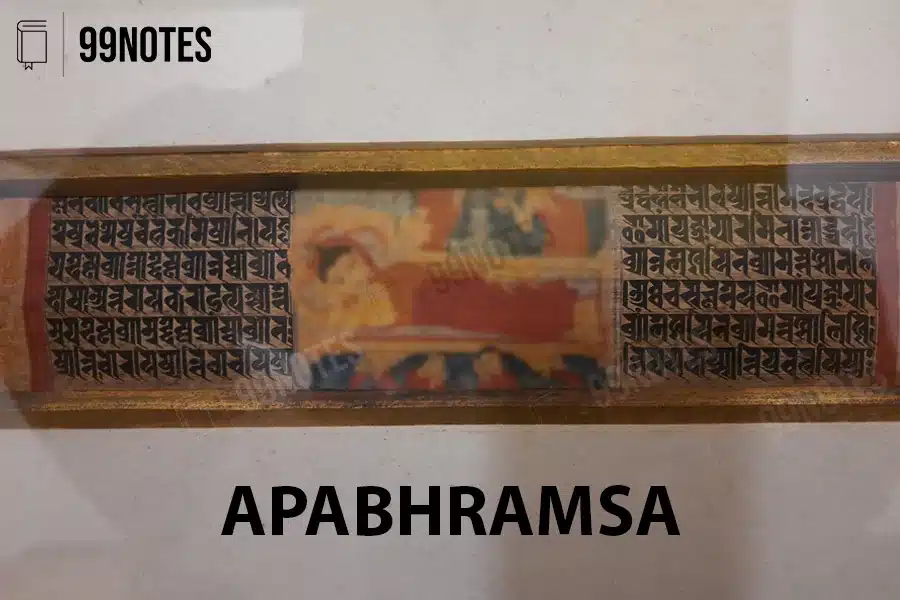Apabhramsa: Language, Literature, and School of Art
Apabhramsa
Apabhramsa, an ancient precursor to the modern Indo-Aryan languages such as Hindi, Gujarati, Marathi, and Rajasthani, stands as a significant historical and cultural phenomenon. This language, flourished between the 6th to 13th centuries, offers a fascinating glimpse into the linguistic and artistic heritage of medieval India.
Origins and Evolution of Apabhramsa
Derived from the Sanskrit term Apabhramsa meaning “corrupt” or “non-grammatical language“, Apabhramsa was initially used to describe local dialects lacking grammatical structure. Over time through the influence of Prakrit, these dialects were refined , adopting vernacular elements into their grammar, which elevated Apahramsa to literary language. This transformation underscores the dynamics nature of linguistic evolution, where Apabhramsa transitioned from being considered a corrupt form of speech to a respected literary medium.
Apabhramsa and Prakrit: A symbiotic Relationship
In Apabhramsa, the complexity of Prakrit was simplified by incorporating vernacular grammar. This adaptation made it a bridge between ancient Prakrit languages and the emerging Indo-Aryan vernaculars. It played a crucial role in the development of several regional languages, marking a significant phase in the linguistic landscape of India.
Literary Flourishing
Apabhramsa is not only noteworthy for its linguistic significance but also for its rich literary output. Many Jain texts, pivotal to understanding medieval Indian philosophy and ethics, were compiled in Apabhramsa. Esteemed authors such as Saraha, Tilopa, Kanha of Kamarupa, and Devasena of Dhar (9th century) Contributed significantly to its leterature, producing works that spanned religious discourse, poetry, and philosophical treatises.
Notable authors in this language:
- Saraha
- Tilopa and Kanha of Kamarupa
- Devasena of Dhar (9th century CE)
- Pushpadanta of Manyakheta (9th century CE)
- Dhanapal
- Muni Ramsimha
- Hemachandra of Patan (He wrote in Sanskrit as well) and
- Raidhu of Gwalior (15th century CE)
Some classics in Apabhramsa:
- Vikramorvashiyam of Kalidasa – A love story of King Pururavas and an Apsara (celestial nymph) named Urvasi, known for her beauty.
- Ritthanemichariu and Pauma-Chariu of Mahakavi Swyambhudev (8th century CE)
- Bhavisattakaha of Dhanpala (10th century)
- Mahapuran, Naykumarchariu, and Jasaharchariu of Mahakavi Pushpadant (10th century).
- Sandesarasaka of Abdur Rahman (12th century)
- Kanhadade Prabandha (15th century) of Padmanabha
- Migankaleha Chariu (18th century CE) of Bhagavatidasa.
The Apabhramsa School of Art
Parallel to its linguistic and literary achievements, Apabhramsa also influenced the realm of art, giving rise to the Apabhramsa school of art. This artistic movement reflected the cultural and philosophical ethos of the time, incorporating themes from Apabhramsa literature into visual representations. The interplay between text and art during this period highlights the comprehensive cultural richness of the Apabhramsa era.
Conclusion
Apabhramsa stands as a testament to the dynamic evolution of language and culture in medieval India. It served as a crucial link in the development of modern Indo-Aryan languages and enriched the literary and artistic traditions of its time. The legacy of Apabhramsa continues to inspire scholars, linguists, and artists, reminding us of the enduring power of language and creativity in shaping human history.





